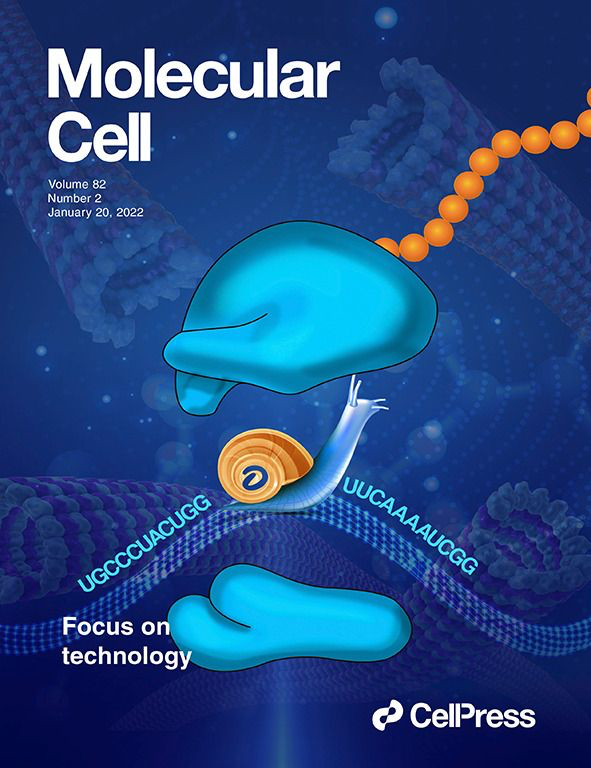
On the cover: In this issue of Molecular Cell, Finet et al. (pp. 404–419) use a transcriptome-wide approach to reveal that the dihydrouridine RNA modification (the snail) is present on eukaryotic mRNAs. They show that dihydrouridylated codons are translated more slowly by the ribosome (blue shapes) and that modification of the tubulin-encoding mRNA is required for proper meiotic chromosome segregation (microtubules are depicted in the background). The snail is the emblematic animal in Namur, Belgium, where this study was conducted. Credit: Pxelperfect.
For details see Finet et al. Molecular Cell, January 20, 2022
The epitranscriptome has emerged as a new fundamental layer of control of gene expression. Nevertheless, the determination of the transcriptome-wide occupancy and function of RNA modifications remains challenging. Here we have developed Rho-seq, an integrated pipeline detecting a range of modifications through differential modification-dependent rhodamine labeling. Using Rho-seq, we confirm that the reduction of uridine to dihydrouridine (D) by the Dus reductase enzymes targets tRNAs in E. coli and fission yeast. We find that the D modification is also present on fission yeast mRNAs, particularly those encoding cytoskeleton-related proteins, which is supported by large-scale proteome analyses and ribosome profiling. We show that the a-tubulin encoding mRNA nda2 undergoes Dus3-dependent dihydrouridylation, which affects its translation. The absence of the modification on nda2 mRNA strongly impacts meiotic chromosome segrega-tion, resulting in low gamete viability. Applying Rho-seq to human cells revealed that tubulin mRNA dihydrouridylation is evolutionarily conserved.